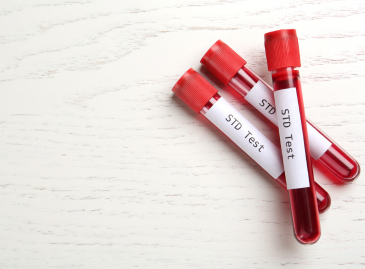LASIK Surgery in Turkey
LASIK surgery has become one of the most popular procedures in modern eye care and for good reason. It offers a quick, efficient, and long-lasting alternative to those who are tired of using glasses or contact lenses. Whether you're nearsighted, farsighted, or have astigmatism, LASIK can help you see again with minimal downtime and impressive results. Let’s walk through what LASIK is, how it works, who it’s for, and why Turkey has become a preferred destination for this advanced vision correction procedure.
We are with you throughout the entire process
You will find some useful information that will help you prepare the necessary organization to prevent all problems and make the necessary arrangements to ensure that everything goes smoothly during your stay in Turkey.
After our with doctor answers all your questions, doctor will explain to you how the operation process will proceed.
You will have a preliminary meeting with the doctor and team we work with before the operation.
Read the document we sent you before coming to Istanbul and be sure to follow the rules.
During the recovery process, our teams will call you, ask about your condition and ask for photos.

FAQ for Lasik Surgery
You will find detailed information about the operation and organization you will need before coming to Turkey. You can contact your sales representative for any further questions.
- A laser process called LASIK surgery reshapes the cornea to fix visual issues like astigmatism, nearsightedness (myopia), and farsightedness.
- By reshaping the cornea, LASIK helps light focus properly on the retina, giving you clearer vision without glasses or contact lenses.
- Yes, the vision correction from LASIK is typically permanent. However, natural age-related changes like presbyopia can still occur later.
- The procedure usually takes about a few minutes per eye. Most patients are in and out of the clinic within a couple of hours.
- The costs in Turkey are significantly lower compared to many Western countries while maintaining high-quality care and advanced technology.
Authorized by the Ministry of Health and Tourism in Turkey
What Is LASIK Surgery?
LASIK stands for Laser-Assisted In Situ Keratomileusis. It’s a type of refractive eye surgery that reshapes the cornea, the clear front part of the eye, so light is properly focused on the retina. The goal is to give you a clear vision without needing glasses or contact lenses. It’s a quick, outpatient procedure that typically takes less than 15 minutes per eye. Many individuals report that their vision improves in as little as 24 hours.
How Does LASIK Work?
The procedure is fairly simple. First, your eye is numbed with special drops. Then, the surgeon creates a thin flap in the cornea using a microblade or femtosecond laser. After carefully raising this flap, the cornea underneath is reshaped using a second laser. Once the cornea is reshaped, the flap is laid back in place, and the eye begins to heal naturally. No stitches are needed, and most people return to normal activities within a day or two.
Who Can Get LASIK Surgery?
Not everyone is a candidate, but many people are. You may qualify for LASIK surgery if:
- You're over 18
- Your vision has been stable for at least a year
- You have no serious eye conditions (like glaucoma or severe dry eyes)
- You’re not pregnant or breastfeeding
An eye exam is the first step to see if you're a good fit. If you're not eligible for LASIK, there may be other options available.
Benefits of LASIK
There are many reasons people choose LASIK surgery. Some of the most common benefits include:
- Clear vision: Most patients achieve 20/20 or better vision
- Freedom: No more dealing with glasses or contacts
- Fast recovery: You can usually return to work or daily activities the next day
- Cost-effective: Over time, you save money on eyewear and lenses
It’s also a confidence booster, and many patients report feeling more independent and active after their vision improves.
Concerns About LASIK Surgery
It’s normal to have questions or concerns before any medical procedure, and LASIK surgery is no exception. Some people may experience temporary effects such as dry eyes, slight blurriness, or sensitivity to light, especially at night. These are typically short-lived and part of the healing process. Serious problems are quite rare, especially when a skilled and experienced specialist is doing the surgery. You can feel confident knowing you're in good hands! That’s why it's crucial to choose a trusted clinic and undergo a detailed consultation beforehand. This ensures you're a good candidate and that your results will be both safe and successful.
LASIK Surgery in Turkey
Turkey has become a leading destination for LASIK surgery, especially among international patients. Why? The country offers a combination of high medical standards, modern technology, and skilled surgeons, all at a much more affordable price than many Western countries. When choosing a clinic in Turkey, it's important to consider factors such as the experience and qualifications of the surgeons, the technology and equipment used, the clinic's safety record, and the quality of aftercare services. Clinics in Istanbul and other major cities are fully equipped with advanced laser systems and are staffed by English-speaking professionals who guide you through every step of your care. Many clinics also cater specifically to medical tourists, offering seamless services including travel arrangements, airport pickups, translation, and aftercare support.
Cost of LASIK Surgery in Turkey
While exact prices vary depending on the clinic and the technology used, LASIK surgery in Turkey is significantly more budget-friendly compared to many countries in the West. The lower cost doesn’t mean lower quality; it's simply due to the lower cost of living and healthcare in Turkey. This affordability can empower you to make a life-changing decision without breaking the bank. Packages often include pre-surgery consultation, the procedure itself, post-op checkups, and support services. At Istanbul Med Assist, we help you access these high-quality services at transparent, competitive rates, with no hidden fees.
What Is Recovery Like?
Recovery is usually smooth and quick. You may feel mild discomfort or experience watery eyes right after the procedure, but that usually fades within a few hours. Most people notice a dramatic improvement in their vision by the next day. You'll be asked to avoid rubbing your eyes and to take a few days off from intense physical activities. To make sure your eyes are healing properly, follow-up appointments are crucial. Most patients return to normal within a week or two, with the exception of having crystal-clear eyesight.
Why Choose Istanbul Med Assist?
At Istanbul Med Assist, we know that getting health care in a foreign country might be scary. But don’t worry—our friendly team is here to guide you through the entire process, making your experience as smooth and stress-free as possible. That's why we're here to help international patients access some of the best eye clinics in Turkey for LASIK surgery. Our friendly team is here to ensure you feel comfortable throughout your entire experience, providing peace of mind from start to finish. We assist with your pre-surgery evaluation, help organize travel and accommodation, provide translation and local support, and stay in touch throughout your entire stay. Our focus is on delivering quality care, clear communication, and personalized support every step of the way, so you can feel reassured and cared for during your LASIK journey.
Final Thoughts
LASIK surgery is a life-changing solution for millions of people around the world. If you’re tired of glasses or contacts, and you’re looking for expert care at a reasonable cost, Turkey could be the perfect place to have your LASIK procedure. Imagine having a clear vision without the hassle of glasses or contact lenses. Enjoy a quick and simple recovery. LASIK surgery can truly transform your life, and Turkey can make it a reality.


